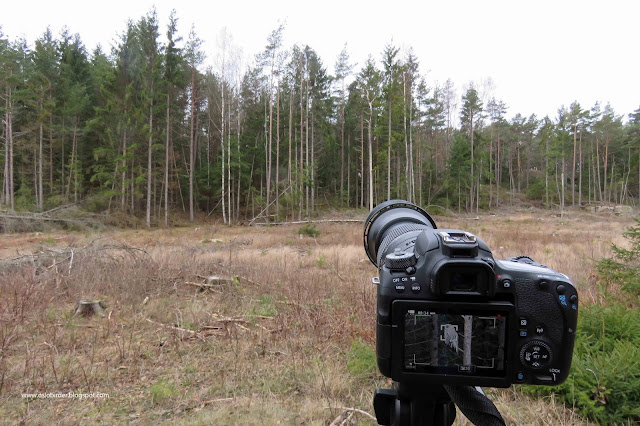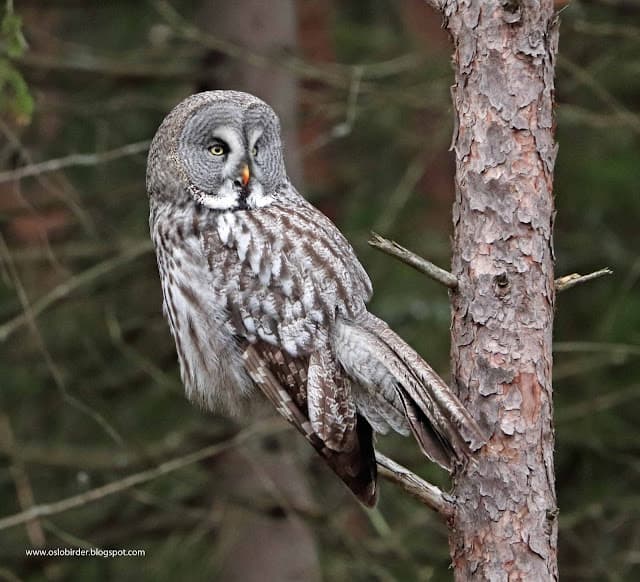Yesterday I had planned a trip to Kurefjorden with Anders. On the way down we received a message that a Great Grey Owl picture had just been posted on Facebook from Hvaler. The exact location was unclear but we had enough information that we decided to alter our plans and keep heading south.
An hour later and there it was! The bird gods were obviously feeling guilty about the Pine Grosbeak fiasco and had decided to reward us big time. She (or he) was just sitting there on the edge of a small clearing right by the road. We got to fill our boots big time and witnessed hunting although the actual capture of a vole was hidden from us and I failed to digitially capture the bird as I would have hoped. My main problem with the digital capture was that I was using two cameras simultaneously taking both video and stills and the three times the bird flew I was just not focused enough.
Whilst we stood there a couple of other birders driving past in search of the bird were able to stop and admire it and later in the afternoon it seems that half of birding Østfold saw the bird after we sent out the exact details but no one sent out any sort of update on the bird or acknowledged the help they had been given with the location – birders really are (me included) a strange breed.

After the owl we went looking for the Water Pipit that I failed to see in January (and which hasn’t been reported for a few weeks) but the area of rotting seaweed that had previously held a plethora of birds had only a single Rock Pipit this time. Offshore there were many Common Eiders and amongst them was a strikingly pale female. Although this bird may be from a northern population/sub species I have been unable to find any clinching features and comments I have had from other people suggests these birds are not that irregular amongst groups of Eiders in southern Norway. I also believe that female Eiders become paler during the summer so this may just be a bird in early summer plumage.
We dropped in at Øra where the stench was nothing but omnipresent and birds were rather uninteresting, but we finished the day not too far away with a roadside Great Grey Shrikel which was a fitting end to a day that started with a much larger Great Grey.
There have been a number of other reports recently of Great Grey Owls along the coast a long way from their breeding areas and this strongly suggests that there is a real shortage of food in those breeding areas and that the owls have been forced to wander widely. After two good breeding years it was to be expected that 2019 would be a bottom year in the rodent cycle so looking for these displaced birds will probably be the best bet to find this species in 2019.












Simon Rix
Simon Rix is an English Birder who has lived in Oslo, Norway since 2001. Birding has been his passion since primary school and after an education as an economist and career within oil and gas and then drinks industry he turned his attention full time to birds as middle age approached. He is particularly interested in patch birding and migration and is an active guide, blogger and photographer. He is a member of the Norwegian Rarities Committee (NSKF).










Leave a Reply